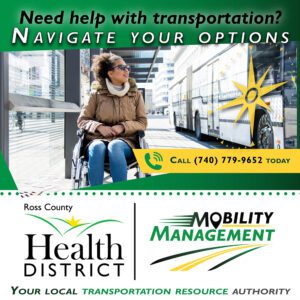
New Website Launched To Assist Safety For Older Drivers
Presented By Hometown-Motors, Inc. & Accurate Heating, Cooling & Plumbing
(Columbus) — As older adults hit the road to join family and friends over the holidays, Governor Mike DeWine, the Ohio Department of Transportation (ODOT), the Ohio Department of Public Safety the Ohio Department of Aging, and AAA are reminding Ohio drivers to “Stay Fit to Drive” by following a few basic safety tips.

In conjunction with the American Occupational Therapy Association’s (AOTA) Older Driver Safety Awareness Week (Dec. 6-10), the Governor is also unveiling a new web page, transportation.Ohio.gov/olderdrivers, with resources specifically created for older drivers, as well as their family, friends and caregivers.
“Although older adults are among the safest drivers on Ohio’s roads, their risk of being injured or killed in a crash increases with age,” said Governor DeWine. “This new website puts resources for older drivers in one place to help them stay independent longer while reducing risks to themselves and others on the road.”
Growing Concern:
People age 65 and older make up the fastest growing segment of drivers nationally and in Ohio. Between 2010 and 2019, the U.S. population of people age 65 and older grew by 34%, according to the National Highway Traffic Safety Administration. In recent years, fatal crashes involving this age group have also increased.
Data from the Ohio Department of Transportation (ODOT) shows the number of deaths involving older drivers spiked in 2019, when 271 people died in crashes on Ohio roads, representing 23% of all traffic deaths statewide. While older driver crash deaths declined in 2020 when many older drivers stayed home, they are rising again this year as vaccinations increase and older adults resume activities.
“Many older Ohioans started driving less in the early months of the pandemic,” said Kimberly Schwind with the Ohio Conference of AAA Clubs. “As they hit the road again their driving skills may be a little rusty, or their health or vision may have changed. That’s why it’s imperative older Ohioans and their families take the time to assess their driving abilities and take the necessary steps to stay safe on the road.”
Normal aging may increase common risk factors for roadway crashes, including changes in vision, hearing, strength, visibility, reflexes, and memory. Medical conditions and certain medications also may impact the ability to drive safely. In addition, older drivers may drive older vehicles that no longer fit their needs (e.g., too big or too small; or seats, steering wheel and mirrors do not adjust sufficiently). Finally, a fear of driving and traffic can increase the risk of a crash.
Resources for Road Users and Their Families:
To help prevent crashes, Ohio has state and local program resources that can help older drivers adopt strategies to stay safe on the road, as well as find alternatives to driving if they can no longer do so safely. These resources can be found on the new website, transportation.Ohio.gov/olderdrivers.
In addition, the Ohio Department of Aging has tips and resources for older Ohioans and their families. They help older drivers maintain their driving abilities and independence and understand the factors that affect their ability to stay behind the wheel safely. They also provide advice for discussing the topic with family members and finding transportation resources. Visit aging.ohio.gov/olderdrivers.
Tips for Older Driver Safety:
Governor DeWine and AAA also offer these tips for older drivers:
- Stay aware of your changing physical, vision and hearing abilities and adjust your driving habits accordingly.
- Ask your doctor or pharmacist if any medical conditions you have or medications you take could make it unsafe to drive.
- Do most of your driving during daylight and in good weather. Avoid busy roadways and rush hours whenever possible.
- Plan your route before you drive and choose routes with well-lit streets, intersections with left turn signals and easy parking.
- Avoid distractions while driving, including talking or texting on a cell phone, eating, or listening to a loud radio.
- Leave plenty of room between you and the vehicle in front of you so you can react if the other driver stops or slows suddenly.
- Do not drive too slowly, as this can be as unsafe as speeding.



























